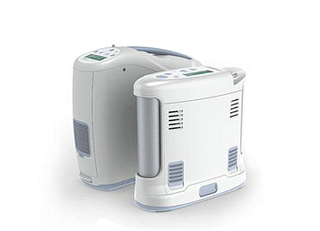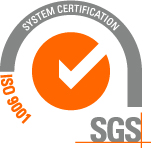- All products are added to your cart.
Information about oxygen concentrators
The oxygen concentrator
Oxygen concentrators have been on the market since the late 70’s. At the time, these large systems were used by hospitals. Over the years, the concentrators have become increasingly smaller. However it has taken a long time before the concentrator actually became a ‘portable oxygen concentrator’. For portable use, a common method for oxygen supply was (and still is) the use of cylinders filled with oxygen. Oxygen in cylinders can be in gaseous form or in liquid form. A cylinder with liquid oxygen lasts longer, because the cylinder is filled with a higher pressure, and therefore more oxygen can be pressed inside the cylinder.
A major disadvantage of the cylinder is that sooner or later they always run out of oxygen. As a result, you are not in control over how long you can leave the house: the cylinder is. In addition, the metal cylinders are, depending on their size, quite heavy.
In 2001, Inogen realized that it should be possible to produce an oxygen concentrator that was small and light enough to carry, and could also be used on battery. Oxygen anytime, anywhere. Complete freedom for the user! Three years later the first Inogen was developed, the Inogen One G1. And since 2006 the Inogen One portable oxygen concentrators are also available in Europe. The small size and low weight of these concentrators, in combination with the long battery life changed the lives of tens of thousands of oxygen users in the whole world. It’s no surprise the Inogen One Portable Oxygen Concentrator is very popular among oxygen users.
Continuous flow and Pulse flow
With oxygen concentrators, you can distinguish between Continuous Flow and Pulse Flow systems (also known as Demand Flow). Flow refers to the flow of oxygen. A continuous flow system will give a constant supply of oxygen. You can imagine that a large part of this oxygen is lost, because you are not breathing in all the time. And for a concentrator to be able to produce a continuous flow of purified oxygen, it has to have quite a large capacity. So in general, these are bigger and heavier compared to pulse flow systems.
The Inogen One G2, G3 and G4 are pulse flow systems which means that the oxygen is delivered in pulses, not constantly. Both concentrators detect the moment you breathe in, and give a pulse of oxygen at exactly the right moment. The Inogen One systems have a very sensitive sensor, enabling it to also detect your breath at night, when you are breathing superficially. That’s why the Inogen One G2 and G3 are suitable for both day and night use. At night you breathe less frequently; the Inogen One concentrators compensate for this by giving a larger amount of oxygen at the moment you breathe less. Another pleasant advantage of a pulse flow system is that it blows less air into your nose, so it doesn’t dry out as much.
Have a look at the Inogen One G2, Inogen One G3 and Inogen One G4 here!
Compare continuous flow with pulse flow concentrators
A question we get often: ‘How do I know which setting to use, when my physician has prescribed two litre of oxygen per minute?’ With a continuous flow system, you can measure the output easily. The setting is for example two litres of oxygen per minute (2 LPM). For a pulse flow system this is harder to measure. It gives less oxygen per minute, but it delivers it at exactly the right moment (when you inhale, and not when you exhale). Less oxygen is lost. So the amount of oxygen produced per minute cannot be compared one on one for both systems.
The Inogen One G2 has 6 flow settings, the Inogen One G3 has 5 flow settings and the Inogen One G4 has 3 flow settings. Every setting of both the Inogen One G2 and the Inogen One G3 gives 210 ml oxygen per minute (setting 4 will give 4 x 210 ml = 840 ml oxygen per minute). Inogen has researched these settings, and came to the conclusion that each of the settings compares to 1 LPM. Are you using 2 LPM now? Then you can use your Inogen One concentrator at setting 2. However we do advise to always measure your saturation when using a new device or setting with a pulse oxymeter.
Main difference between the Inogen One G2, Inogen One G3 and Inogen One G4
To help you make a choice between the two concentrators, we have listed the most important differences between the G2, G3 and G4:
| Inogen One G2 | Inogen One G3 | Inogen One G4 | ||||
| Weight | 3,2 kg | 2,2 kg | 1,7 kg | |||
| Size | 27 x 10 x 24 cm | 22 x 8 x 18 cm | 15 x 6.8 x 18.2 cm | |||
| Noise level | 38 decibel | 39 decibel | 40 decibel | |||
| Flow settings | 6 flow settings | 5 flow settings | 3 flow settings | |||
| Sieve beds | Internal (can only be changed by us, but longer lifespan) |
External (can be easily changed by the user, but shorter lifespan) |
External (can be easily changed by the user, but shorter lifespan) |
To summarize, the Inogen One G2 is ideal for you if you want a very quiet oxygen concentrator. Also for people who need 4 LPM or more, we recommend the G2.
The Inogen One G3 is more suitable for you if you prefer a lighter and smaller concentrator and do not need more than 4 LPM oxygen.
The Inogen G4 is the smallest portable oxygen concentrator of Inogen.


